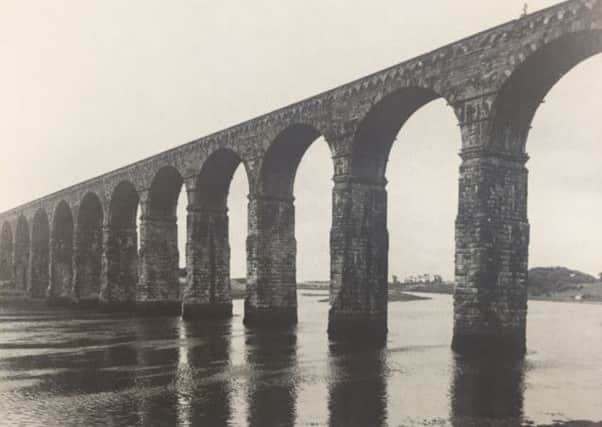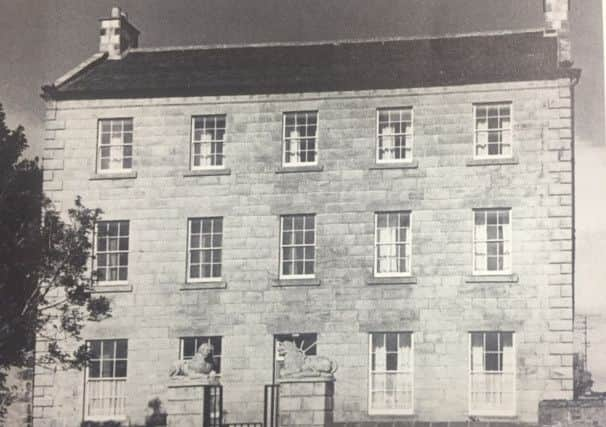TV programme offered a unique snapshot of local life


Berwick-upon-Tweed, unique for its fortifications and bridges, made a fascinating addition to the 18 towns visited over the three series.
Some might argue the programmes were amongst the best the BBC made in what was a golden era for television.


The idea
Advertisement
Hide AdAdvertisement
Hide AdBeing selected to feature as one of the towns wasn’t easy. Originally there had been a shortlist of 100. The first series, broadcast in the late summer of 1978, included Chichester, Richmond in North Yorkshire, Tewksbury, Stamford, Totnes and Ludlow. The series was a great success, gaining critical acclaim and spurring the BBC to commission a second series.
Berwick-upon-Tweed made the second selection, along with Saffron Walden, Warwick, Lewes, Bradford-on-Avon and Beverley. The Berwick programme was broadcast on September 22, 1981, at 7.50pm, on BBC2.
The format was simple, six towns, each explored in a 40-minute programme, with Alec Clifton Taylor presenting and combining his passion for his subject with a measure of praise and criticism.


In Berwick he found much to praise, from the Berwick Town Preservation Trust to the grand Royal Border Bridge and, of course, the fortifications, which he considered unique.
An exercise in looking
Advertisement
Hide AdAdvertisement
Hide AdAlec Clifton Taylor wanted the programmes to be an “exercise in looking”. The concept was that the viewer could look at shapes and textures of buildings, and not necessarily just grand houses and churches.
Far more modest dwellings received attention, and this is true of Berwick where several smaller buildings received praise alongside some considerable time spent considering the bridges and fortifications.
Praise and criticism
In the Berwick programme several of what had become by the second series, his trademarks, were apparent – dashing up church spires and towers, in Berwick the steeple of the Town Hall, and proving he had a head for heights.
He also gave some frank assessments of those things he felt were not right.
Advertisement
Hide AdAdvertisement
Hide AdIn Berwick he found little to be critical of, but was not impressed by some of the pointing work at the Lions House, Windmill Hill, although he celebrated its rescue and restoration. He also found some examples of missing glazing bars in windows.
He did praise much though – the roofing slates and pan tiles, he considered The Royal Border Bridge to be thrilling and also the defences, the only example in England.
All in all, he found Berwick to have all of the aspects he considered important in an English town of merit.
A golden era
Alec Clifton Taylor died on April 1, 1985. Sadly, his television work came at the end of a career, which involved lecturing and writing on English architecture, churches and cathedrals, stone and brickwork.
Advertisement
Hide AdAdvertisement
Hide AdHis knowledge had been collected over decades of travelling. He had visited almost every church, if not every church, in England and was fastidious in his note taking, often revising his notes. He was also a great communicator; he really could make a brick wall seem interesting.
Today, Six English Towns has immense nostalgic appeal. The fashions and cars are long gone, but the buildings remain, many better today than they were then. He would have been delighted that the Barracks are now occupied, for example.
Six English Towns captured Berwick-Upon-Tweed as it was over a few days in 1980/81, including the life of the town. Many shots are full of people going about their day to day lives – the opening shots capture the street market next to the Town Hall bustling with people and cars. More than 35 years on, these images preserve how Berwick was in the early 1980s.
Essentially though, the main purpose of the programme still remains valid and relevant today – the celebration of the pattern of English building, and in each town what he saw is still very much there.
Advertisement
Hide AdAdvertisement
Hide AdThe DVD release will bring pleasure to many people, those who remember the series and those who come fresh to them.
Alec Clifton Taylor’s work is a precious and worthy tribute to our many towns, and Berwick was fortunate and good enough to be in the 18 that were so carefully chosen.
Six English Towns is available now. Six More English Towns and Another Six English Towns follow in October 2016 and February 2017.
l Paul Croston is a teacher of media, film and journalism at a sixth form college in Luton, married with two children.
Advertisement
Hide AdAdvertisement
Hide AdThe first Six English Towns episode was from Chichester, shown in the late summer of 1978, and Paul’s family had holidayed near there that summer.
He said: “We watched the programme and from that episode on I was fascinated by buildings. Although watching as an 11-year-old, there was something about the programmes that captured my imagination. As soon as my family acquired a video recorder, I recorded the programmes and have watched them countless times since.
“As soon as I could drive I started to visit the towns with a close friend who also enjoyed the series; we enjoyed many excellent days out.
“The way Alec Clifton was able to draw attention to details that surround us in our towns has proved to be an unending pleasure.”
Advertisement
Hide AdAdvertisement
Hide AdOver the years Paul read all of Alec Clifton Taylor’s books on English architecture. He also acquired a significant part of his archive, which provided a fascinating insight into architectural history and the man himself.